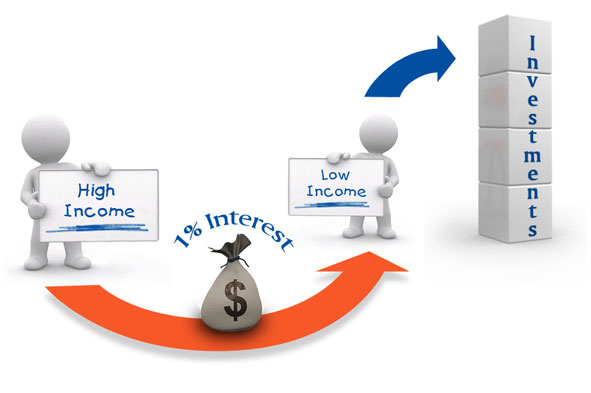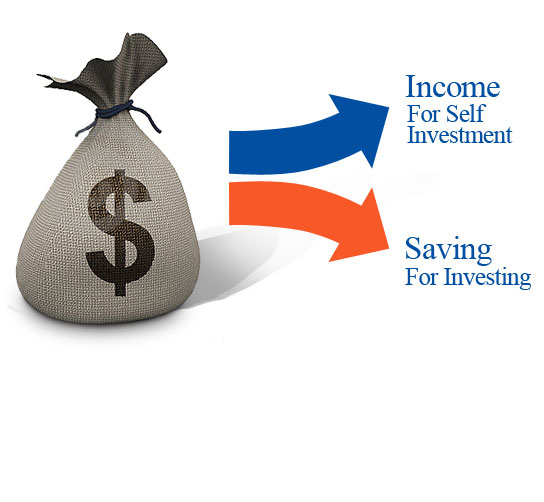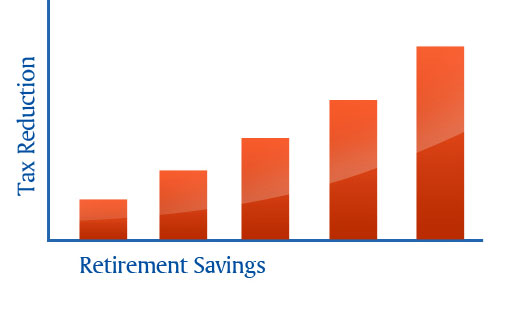Tax Assessment
Is one spouse making more than the other?
 If one spouse is making more than the other, consider income splitting to save tax using one of two methods.
If one spouse is making more than the other, consider income splitting to save tax using one of two methods.
Method 1 – The best option is to have the spouse earning a higher income pay the household bills such as rent, mortgage, car expenses and groceries. By doing this, it frees up the lower earning spouse’s income to save and invest. If profit is made on the investment, the tax is paid by the lower income spouse at a lower rate.
For example, assume the spouse with the higher income is taxed at 49% being a part of the higher tax bracket and the spouse with a lower income has a tax rate of 20%. In this case, the profit made on the investments by the lower income spouse will be taxed at 20%.
Method 2 – If you are the spouse earning a higher income, it is suitable to lend your spouse money as a loan for investment. The profit on the investment will be included in the lower earning spouse’s taxable income and therefore taxed at a lower rate. Be sure to charge interest on the loan as it provides compliance with the CRA, otherwise the profit earned on the investment will be included in the higher earning spouse’s income.
Did you make a profit from selling shares in the year?

When one is investing, they can be confused whether to call their losses or profits as “business profit” or “capital gain”. We suggest calling your profit a capital gain and losses a business loss as the best way to approach income made through investments. The simple reason for this is that only 50% of capital gains are taxable in Canada, but business earnings are 100% taxable. Where there is a business loss, the loss will be fully deductible, whereas a capital loss is only half deductible.
Do you keep a portion of your money in savings?
 If you hold a portion of your money within investments, it is crucial that you select the right type in order to maximize your financial gains and minimize your tax obligations. Different types of investments are taxed at different rates. You should consider investments that generate capital gains and or dividends as opposed to those that generate interest income, due to the lower tax rate.
If you hold a portion of your money within investments, it is crucial that you select the right type in order to maximize your financial gains and minimize your tax obligations. Different types of investments are taxed at different rates. You should consider investments that generate capital gains and or dividends as opposed to those that generate interest income, due to the lower tax rate.
The 2014 tax rates for different types of investment income are below. Please note that these tax rates are for the highest income tax bracket.
Interest income – 49.53%
Canadian ineligible dividends – 33.85%
Canadian eligible dividends – 38.6%
Capital gains – 24.76%
Remember that both money market investments and fixed income investments generate interest income. Types of investments that fall under money market include cash and near cash investments. Examples of near cash investments include Guaranteed Investment Certificates (GICs), Canada Savings Bonds, and money market mutual funds.
Investments such as common shares in a publicly traded company, real estate, and Mutual funds are classified as equity investments and generate capital gains.
Do you want to save for retirement and reduce your taxes at the same time?
 If so, then considering using a registered retirement savings plan (RRSP). RRSP’s can accomplish both of these objectives with the proper tax planning strategy. The first benefit is that any investment funds held inside an RRSP is able to grow tax-free. The second benefit is that you can claim a tax deduction for the total amount of your RRSP contribution for the year. This is subject to the maximum RRSP limit.
If so, then considering using a registered retirement savings plan (RRSP). RRSP’s can accomplish both of these objectives with the proper tax planning strategy. The first benefit is that any investment funds held inside an RRSP is able to grow tax-free. The second benefit is that you can claim a tax deduction for the total amount of your RRSP contribution for the year. This is subject to the maximum RRSP limit.
Additionally, you can reinvest the tax savings that you make from an RRSP contribution in another outside investment.
Let’s say you make a $9000 RRSP contribution. Based on the highest tax rate, your tax savings will be $4458. You can then reinvest this amount to another investment vehicle outside your RRSP. Based on a 6% annual interest rate and a period of 30 years, you can potentially make $25,604 before tax on your investment.
Would you like to receive tax-free employment benefits from your workplace?
 Instead of a traditional salary system, ask your employer to reduce your wages that are fully taxable to you in exchange for tax-free employee benefits. Using this strategy, you will have more money in your pocket after tax. Non-taxable benefits are divided into four categories: house benefits, benefits for family, individual, and work benefits. – Non-taxable work benefits:
Instead of a traditional salary system, ask your employer to reduce your wages that are fully taxable to you in exchange for tax-free employee benefits. Using this strategy, you will have more money in your pocket after tax. Non-taxable benefits are divided into four categories: house benefits, benefits for family, individual, and work benefits. – Non-taxable work benefits:
– Subsidized meals
– Recreational and fitness facilities
– Special clothing and uniforms
– Transportation to work
Other types of nontaxable benefits are as follows.
House benefits
– Loan from your employer to buy a home
– Moving costs
– Housing allowance for remote work locations
– Used furniture and computer equipment
Individual benefits
– Merchandise discounts
– Fees for memberships
– Gifts
– Costs for education
– Property use for vacations
– Trips
Benefits for family
– Personal counseling (for example, a psychiatrist)
– Daycare
– Passes for transportation
– Premiums in a group plan it for medical benefits
– Plans for private healthcare
– Disability coverage
– Death benefits
If you could work from home in your current job to save tax, would you?
 If you could work from home in your current job to save tax, would you? In order to be eligible to deduct home expenses, you must meet one of the following criteria. First, your home must be your principal place of business. Secondly, your home must have a designated place for working. This area is used for meeting clients on an ongoing matter.
If you could work from home in your current job to save tax, would you? In order to be eligible to deduct home expenses, you must meet one of the following criteria. First, your home must be your principal place of business. Secondly, your home must have a designated place for working. This area is used for meeting clients on an ongoing matter.
To calculate the deduction, divide the working area in your home by the overall square footage of your house. Then, multiply this number by the eligible expenses. If you cannot designate an area of your house exclusively for work, you will have to prorate the approximate time the area is used for work purposes as compared to personal use.
Also, you should maximize the home area used in your business or minimize the area of your home. For example, you could exclude the basement area of your home in your calculations.
Remember that if you’re an employee, you’re not able to deduct certain home related costs. In this case, you cannot deduct property taxes, insurance, or mortgage interest. However, you can deduct utility bills and condo fees. These restrictions do not apply to self-employed individuals. To claim house deductions, be sure to get the form T2200 signed and completed by your employer.
Have you ever received an unfavourable tax assessment from the CRA?
 If you have received a notice of assessment that you believe is inaccurate or unfair, then make sure you dispute it. The CRA processes millions of returns every year, and they’re bound to make mistakes. You can contact a local accounting professional to file a notice of objection in order to dispute your notice of assessment. However, your notice of objection must be sent within 90 days of when your issue of the notice of assessment is first issued.
If you have received a notice of assessment that you believe is inaccurate or unfair, then make sure you dispute it. The CRA processes millions of returns every year, and they’re bound to make mistakes. You can contact a local accounting professional to file a notice of objection in order to dispute your notice of assessment. However, your notice of objection must be sent within 90 days of when your issue of the notice of assessment is first issued.
Would you like to increase your savings by allocating a portion of your mortgage payments to an RRSP?
 If you have extra money that is allocated towards paying off your mortgage, it might be a good idea to invest some of that into your RRSP instead. In the long run, the gains from your RRSP investment will yield greater financial benefits than the gains from paying off your mortgage sooner.
If you have extra money that is allocated towards paying off your mortgage, it might be a good idea to invest some of that into your RRSP instead. In the long run, the gains from your RRSP investment will yield greater financial benefits than the gains from paying off your mortgage sooner.
For example, Donna has a house with a mortgage of $150,000. Each month she makes payments of $906.37, and she has 20 years left of her mortgage. The interest rate on her mortgage is 4%, and the rate of return on her RRSP is 4% as well. She wants to pay an additional $600 per month to pay off her mortgage quicker.
If she uses that additional $600 to pay off her mortgage, her savings would be $32,233 in interest and the amortization period would be reduced to 11 years.
Now if she were to invest that extra $600 each month into an RRSP, her RRSP gains after 11 years minus her total contribution would be $64,750. This is almost double the return of her savings if she were to pay off her mortgage instead. This is because the growth of investments inside your RRSP is completely tax free. In addition, the contributions that you make are also tax deductible in the year that you make them.
Are you planning on buying a house in the future?
 There are two main tax strategies you can use when buying a home. First one is the Home Buyer’s Plan (HBP). Normally, if you choose to withdraw funds from your Registered Retirement Savings Plan (RRSP) early you would face penalties. Under this program, however, you can withdraw tax-free funds (without penalty) to build or buy a qualifying home for you or a relative with a disability. The CRA defines a qualifying home as a “housing unit located in Canada, this includes existing homes still being constructed”. If you share a house that only provides you tenancy rights, your housing unit does not qualify.
There are two main tax strategies you can use when buying a home. First one is the Home Buyer’s Plan (HBP). Normally, if you choose to withdraw funds from your Registered Retirement Savings Plan (RRSP) early you would face penalties. Under this program, however, you can withdraw tax-free funds (without penalty) to build or buy a qualifying home for you or a relative with a disability. The CRA defines a qualifying home as a “housing unit located in Canada, this includes existing homes still being constructed”. If you share a house that only provides you tenancy rights, your housing unit does not qualify.
Under the home buyer’s plan, there is a withdrawal limit of $25,000 per calendar year. You usually have to repay all withdrawals from your RRSPs within 15 years. You must repay an amount of your RRSPs each year until your homebuyers plan reaches zero. Missing a payment will include the amount of your income for that year. The strongest case for going this route is the tax deduction you receive when you contribute to the HBP. If you invest the tax deduction you get in your RRSP, you get extra savings boost.
The second strategy that you can use when buying a home is to use a tax-free savings account (TFSA). although you do not get a tax deduction when you contribute money to a TFSA, you are free from rigid repayment requirements. Though you must repay your loan under the HBP, you do not with the TFSA. However, there is a primary flaw with TFSA’s; they have an yearly contribution limit of $5500. You can carry forward unused room, which means that you can put in $31,000 if you haven’t used one before. The HBP allows you to withdraw up to $25,000.
As an employee, would you want to reduce the taxes you pay now to a flat tax of 15.5%?
 Contractors pay a much lower tax rate than employees, and they have more write-offs available to them. In fact, incorporated contractors pay a corporate tax rate of only 15.5% on the first $500,000 of profits. To be considered as an independent contractor by the CRA, consider the following elements to improve your chances. If your employer has great control over how and when you work, you are most likely going to be considered an employee. The work agreement should clearly state that you, the independent contractor, work independently with little to no supervision.
Contractors pay a much lower tax rate than employees, and they have more write-offs available to them. In fact, incorporated contractors pay a corporate tax rate of only 15.5% on the first $500,000 of profits. To be considered as an independent contractor by the CRA, consider the following elements to improve your chances. If your employer has great control over how and when you work, you are most likely going to be considered an employee. The work agreement should clearly state that you, the independent contractor, work independently with little to no supervision.
If your employer provides your tools and equipment, you will probably be considered an employee. To be considered as an independent contractor, your agreement should state that you are responsible for providing all the necessary tools and equipment.Also, employees do not usually take on the financial risks of their employers. Consider paying for specific costs (i.e. rent, share of overhead) to improve your chances of being considered as an independent contractor.
Compared to independent contractors, employees have fewer opportunities for profit. Consider placing a clause in the agreement that allows for a milestone or a success payment to you. There should be clear mentioning in the contract that you are an independent contractor and your employer as a customer. This factor alone has settled many court cases.
Do you have a spousal RRSP that you would consider using to balance retirement income?
 Contributing to a spousal RRSP can be tricky, especially if there is a difference in income between you and your spouse. Done right, spousal RRSP contributions can result in tax savings and avoidance of over contribution penalties.
Contributing to a spousal RRSP can be tricky, especially if there is a difference in income between you and your spouse. Done right, spousal RRSP contributions can result in tax savings and avoidance of over contribution penalties.
A spousal RRSP is a special type of RRSP, in which the contributing spouse receives a tax deduction for amounts that they contribute to their spouse’s RRSP. Money contributed to the spousal RRSP does not legally belong to the contributing spouse, but to the recipient. The government bases the maximum contribution limit on the contributing spouse’s limit. Let’s use an example to further explain the benefits.
Charlie and Susan are a married couple. Charlie, the contributing spouse, earns $130,000 a year. Susan is a homemaker. For this example, let’s say that they have a long-term rate of 6% on their spousal RRSP. If Charlie contributes $500 per month to a regular RRSP for 30 years, he will have saved $502,258 in total. While this may sound great, this creates a problem for our couple if Susan has negligible amounts in her RRSPs. Any funds that Charlie withdraws when he retires will be added to Charlie’s taxable income. Doing so will cost Charlie a lot in tax, it will cost Susan nothing.
Charlie should have split his $500 contribution in half. Half would go to his own RRSP, and the other in his spousal RRSP. In 30 years, our couple would each have $251,129 in their RRSPs. This would result in lower taxes for the both of them.
Would you consider buying flow-through shares, which are 100% deductible investments?
 The CRA offers special tax benefits for purchasing flow-through shares. If you’re looking to invest, flow-through shares are a great way to save on tax.
The CRA offers special tax benefits for purchasing flow-through shares. If you’re looking to invest, flow-through shares are a great way to save on tax.
Flow-through shares are shares in mining, oil and gas, and renewable energy companies whose main business is exploration and development. These companies transfer (or flow-through) their resource expenses to owners of their shares instead of deducting these expenses themselves. As an owner of such a share, you can deduct the transferred expense on your personal return. Usually, the resource expense transferred is the same as your investment.
Let’s say that you bought $10,000 of flow-through shares in a mining company. This mining company transfers resource expenses to you in the amount of $3000 in the first year, $4000 in the second year, and $3000 in the third year. As a result, your taxes payable will be reduced by $4640 ($10,000 multiplied by 46.4% tax rate) over a three-year period. In addition, you will be entitled to federal and Ontario tax credits for $1500 and $500 respectively. The total tax benefits alone amount to $6640!
Even if the flow-through shares fail to increase in value, you’ll end up with $16,640 ($10,000 plus $6640). This represents a 66% return on your investment. Flow-through shares can be quite volatile, however, so it is important you consult with an accountant before you make the decision to buy them.
Are you a member of a union or a professional organization?
 You can deduct dues paid to unions and professional organizations if you had to pay them to maintain membership in the union or professional status in the organization. Voluntary organizations don’t count though, unless you’re self-employed.
You can deduct dues paid to unions and professional organizations if you had to pay them to maintain membership in the union or professional status in the organization. Voluntary organizations don’t count though, unless you’re self-employed.
Would you like to know how the wealthy pay less tax?
 Many wealthy people use a number of different strategies to save tax and maximize their wealth. This includes stock options, golden parachutes, and capital gains. These aren’t just for the rich though! Consider using some of these tactics for yourself.
Many wealthy people use a number of different strategies to save tax and maximize their wealth. This includes stock options, golden parachutes, and capital gains. These aren’t just for the rich though! Consider using some of these tactics for yourself.
The first tactic we will look at is using a stock option. This is a contract that allows for the purchase of a specified amount of shares at a predetermined price sometime in the future. Let’s use an example to illustrate the benefits. You enter into an options agreement to buy IBM shares within five years for $10 a share. If IBM shares moved to $1000, you would stand to make $9990 per share.
The second tactic is a golden parachute. Golden parachutes are designed to provide an executive with security, should a merger or termination occur. This comes in the form of stock options, severance pay, and cash bonuses. For example, Blackberry CEO Thorsten Heins received a golden parachute first termination. This garnered him a huge amount of controversy.
The third tactic deals with capital gains. Unlike us, most wealthy CEOs do not receive a consistent paycheck or salary. Their wealth comes from company shares, which are tax of 23%. Tax at a regular salary, their rate would almost be double. In fact, business tycoon and financial guru Warren Buffett was known to be paying less tax than his secretary!
Are you maximizing your personal tax credits each year?
 Each year the average Canadian leaves thousands of dollars in unclaimed tax credits, simply because they were not aware. Don’t be one of these people. First off, you might be asking what a tax credit is. Simply put, it is an amount that directly reduces your tax liability dollar for dollar. So, one dollar of credit would allow you to reduce your tax bill by one dollar. It is important to distinguish this from tax deductions which are used to reduce your total taxable income.
Each year the average Canadian leaves thousands of dollars in unclaimed tax credits, simply because they were not aware. Don’t be one of these people. First off, you might be asking what a tax credit is. Simply put, it is an amount that directly reduces your tax liability dollar for dollar. So, one dollar of credit would allow you to reduce your tax bill by one dollar. It is important to distinguish this from tax deductions which are used to reduce your total taxable income.
Below are some common tax credits you could be eligible for: the education tax credit, Ontario energy and property tax credit, donations gift tax credit, and the public transit tax credit.
Education Tax Credit
If you are a post-secondary student, you are eligible for a wide range of credits. This includes the tuition, education, and textbook tax credits. The tuition tax credit provides you with a credit for fees you paid related to your educational institution. Such fees include entrance, facility, and laboratory fees. You can also claim an education tax credit for each month you are enrolled in a qualified institution. The textbook credit also works in the same way. You can claim $65 per month as a full-time student, and $20 per month as a part-time student.
The Ontario Energy and Property Tax Credit
If you file a tax return and are a resident of Ontario, you should automatically receive this credit as part of the Ontario Trillium benefit. This credit provides you with up to $1000 to help you offset the costs of rent and property tax.
Donations and Gift Tax Credit
If you make a donation to a registered charity, you can claim both a provincial and federal tax credit. You can usually claim the full amount of your donation as long as the amount is less than 75% of your income.
Public Transit Tax Credit
If you have a weekly or monthly public transit pass that offers unlimited uses, you can claim this tax credit. These include local buses, streetcars, subways, commuter trains, and local ferries.
Do you drive for work?
 If you use your car for work, then you can claim tax deductions for a portion of the relevant expenses related to its functionality and operation. Some of these operating fees include fuel, oil changes, maintenance and repairs, license and registration fees, cleaning costs, and even auto club fees. Much like any depreciating asset that you use for work, you can also claim the capital cost allowance on your vehicle. For 2014, the maximum depreciation cost you can claim is $30,000.
If you use your car for work, then you can claim tax deductions for a portion of the relevant expenses related to its functionality and operation. Some of these operating fees include fuel, oil changes, maintenance and repairs, license and registration fees, cleaning costs, and even auto club fees. Much like any depreciating asset that you use for work, you can also claim the capital cost allowance on your vehicle. For 2014, the maximum depreciation cost you can claim is $30,000.
If you use a loan to purchase your car, the loan interest is also tax deductible. However, you can only claim up to $300 per month. Additionally, if you lease your car you will also be entitled to deduct a portion of the lease cost.

SOCIAL CONNECT